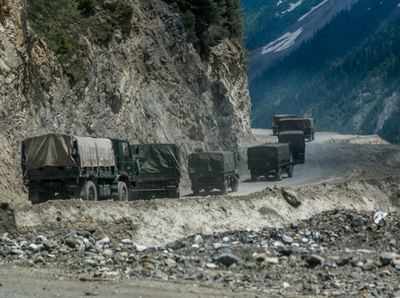
Last year on June 15, 20 Indian soldiers were killed in the Galwan Valley in the first deadly border battle in nearly five decades, provoking a significant deployment of troops and heavy equipment by both forces at the friction sites.
People in the defence establishment said on Monday that a year after deadly clashes between Indian and Chinese armies in the Galwan Valley in eastern Ladakh, India is better prepared to deal with any eventualities along the Line of Actual Control (LAC) as the trust gap between the two sides persists.
According to them, the Galwan Valley incident aided Indian security planners in crystallizing the country’s approach to China as well as recalibrating short- and long-term goals in light of potential security risks. The Chinese military is also said to have strengthened its outposts in numerous deep locations in the high-altitude zone.
The skirmishes, according to the sources, hastened the “jointness” among the three services, citing the example of the Indian Army and Indian Air Force working together to deal with the overall problem along the LAC. Although it is widely thought that the death toll was greater, China officially admitted in February that five Chinese military commanders and soldiers were killed in confrontations with the Indian Army.
“Military-wise, we are considerably better prepared. The battles in the Galwan Valley aided us in prioritising our national security strategy for the northern border “one of the above-mentioned people remarked. According to the sources stated above, there is still a “trust imbalance” between the two countries, and India is well prepared to cope with any crisis in eastern Ladakh and other areas along the LAC.
Following the Galwan Valley battles, which occurred almost a month after the border stalemate between the Indian and Chinese forces began in various friction points in eastern Ladakh, ties between the two countries were severely strained.
Days after the incident, External Affairs Minister S Jaishankar told his Chinese colleague that the “unusual development” would have a “significant impact” on the bilateral relationship. Months later, at a meeting in Moscow on September 10, Jaishankar and Chinese Foreign Minister Wang Yi agreed on a five-point plan to end the standoff.
Following a series of military and diplomatic talks, the two sides completed the withdrawal of troops and weaponry from the north and south banks of Pangong Lake in February. They’re now talking about extending the disengagement process to the remaining points of contention.
At the 11th round of military discussions, the Chinese side did not exhibit any flexibility in their approach to troop disengagement at the remaining friction points, therefore there was no obvious progress in this area. Army Chief Gen MM Naravane said last month that there can be no de-escalation without complete disengagement at all friction spots in eastern Ladakh and that the Indian Army is ready for any eventuality in the region.









